Share your knowledge & learn from experts
Because prepping and community go hand in hand
Need recommendations on buying an RV system sized solar setup
I’m looking into buying some solar panels, a battery, inverter, etc. that could be used to power some small appliances (not a whole house or even air conditioning or a furnace blower—basically something about the size of an RV system) in the event of a power outage.
At the very least, setting up and using a small system will give me some idea of whether we want to install a larger system down the road.
Does anyone have recommendations as to a retailer where I could buy the solar panels and other items? It would be helpful if the retailer has actual technical support available. I know some about electrical systems but am definitely not an electrician or an engineer. Of course, I have found some retailers online, but I’m very hesitant to spend that sort of money with a retailer online without knowing much about them.
In addition, if anyone has suggestions on the brands of the panels or batteries, feel free to mention those as well.
Thanks in advance!
Read MoreRecognizing when it’s time to change how you prep
Yesterday, my prepping evolved. I made a hard choice and packed up all my canning gear for donation.
Over fifteen years ago, I purchased all of it when I ramped up my preps. It was a natural choice to return to the lifestyle I knew so well. Canning was part of self-sufficiency.
The problem was I never used any of it. The canning gear sat in unopened boxes for the someday promise of a garden.
The canning supplies also sat in boxes because there was no room on my prep shelves for any of those lovely unfilled jars. That was because I had already stocked my shelves with store bought cans, regularly rotated and neatly stamped with expiry dates.
There was no way to carve out more room in my prep storage. The space just wasn’t there and yesterday, I finally accepted that fact.
I also accepted that jarred foods as preps don’t make sense for me anymore. My husband and I avoid high sugar foods and rarely eat jam.
Arthritic hands mean an unpredictable grip. If I drop a jar, it breaks. If I drop a can, it dents.
If we ever had to bug out or set up an alternate location for bug out, it will be easier to load tin cans than glass jars.
I was also concerned about the sustain ability of long term canning without replenishment of canning supplies, like lids or even fuel to properly sterilize jars and keep the process clean under what might be adverse conditions.
The risk of a bad batch of canning had always bothered me in the back of my mind. My Mom was an expert canner, and yet, I remember a time when she culled a batch of canned beans because she didn’t like the look of them that winter.
A friend made us lunch one day and proudly brought out her jar of jam. There was mould under the paraffin seal. I expressed regret that her jam was spoiled. She didn’t believe that it was “spoiled” and scooped the upper layer of jam out of the jar. I refused to eat any of it. Mould on the surface is also below the surface and should never be consumed.
No matter how careful a person is, home canning does carry the risk of botulism. A pressure canner is safest for low acidic foods, but it always goes back to operator error as a possible source of food borne illness.
Food borne illness is not something anyone wants to encounter in the best of times and definitely not during a crisis where medical care may be unavailable. Spoiled and inedible food is not a prep.
The last factor in my choice to relinquish my canning gear and preserve food using different methods was because of what happened last summer.
My someday promise of a garden finally arrived. I promptly blanched and froze everything that I grew. The thought of canning in that heat never crossed my mind. Not once.
I realized that it was time to evolve again.
The word evolution comes from the Latin “evolvere” meaning “unrolling.” One of it’s meanings is “gradual development” and that is exactly what prepping has been for me.
Prepping is not a static, “do it this way forever” practice. It is a part of a life that undergoes growth, change, and gradual development.
If anything prepping has taught me to face reality and find solutions.
So, it is out with the canning and hello freeze drying. I have my home sized freeze dryer picked out. Until the budget allows it, I will be deep freezing my produce instead. What I grow this year will also be harvest as part of daily meals and if there is surplus, it will go for donation to the food bank.
I believe the freeze dryer will be a good prepping investment. Freeze dried foods have a longer shelf life than dehydrated foods. I can seal the freeze dried food into mylar bags and put them into pails for storage. The pails work well on my storage shelves and I don’t have to worry about breakage.
These are the moments in prepping when we can practice courage by letting go of an idea of how to prep that no longer works for us.
I was holding onto the tradition of canning and the memories it held for me. Now, I am forging new methods that hold the promise of new lessons and more to learn.
I think sometimes in prepping, there is a tendency for people to embrace ideas or methods of survival, because that is what everyone else is doing. However, that doesn’t always make it right for you. No matter how you prep, do what works for you. Don’t be afraid to evolve.
Read MoreCook your food in water instead of over a fire during a survival situation for the most nutrition
When you need to cook something you have caught, hunted, or foraged, cooking it as a soup in a pot of boiling water is much more nutritionally efficient versus grilling it over an open flame.
By containing the food in the pot, all of the nutrients are infused into the surrounding water which can later be drank as broth. That’s why chicken noodle soup was a common “cure” to being sick, because back in the day the whole chicken was cooked into the soup and the bones, joints, and skin would be broken down into a very nutritionally dense broth. The can of Campbells chicken noodle soup from the store in 2022 does not provide the same benefit.
It’s also easier to make sure that the food is cooked thoroughly if it has been boiling in a pot of water for some time. You can’t burn and char it in water but that can happen over an open flame.
A grilled piece of meat will always taste so much better, but in a survival situation you want the most nutrition as possible in soup form.
Read More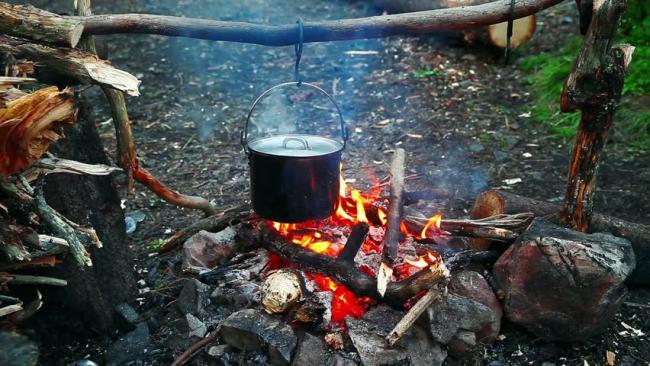
How to enable FEMA test alerts on your phone
There was a lot of coverage in the media about FEMA testing emergency alerts on 11 August 2021. I warned friends, family, and The Prepared community members so they wouldn’t be unduly alarmed. The time came and went and… nothing.
As it turns out, you have to opt into these alerts, and the way you do so isn’t obvious.
Android: The location of this setting depends on your version of Android. Your best bet is to open Settings and search for “Emergency Alerts” or “Public Safety Messages.” There are two settings you want to turn on: Public Safety Messages and State and Local Tests.
iPhone: Open the Phone app, enter *5005*25371# and tap the green call button. You should receive a confirmation message.
Read More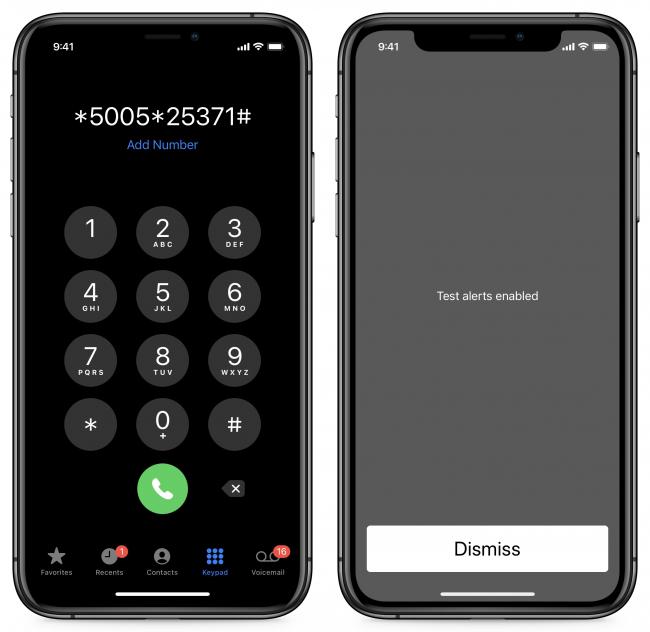
What is the best disaster-proof pouch for important documents in my BOB?
I’m looking for a somewhat budget-friendly disaster proof pouch for my important documents but I don’t know where to start. Is there a brand I should begin with?
Read MoreIs bamboo the super prepper plant it is made out to be or a nightmarish menace?
At first glance many preppers may be drawn to bamboo for it’s multitude of uses and extremely quick grow time. But for those who have dealt with it know that it is an invasive plant that will quickly overgrow the area in which it was originally planted and can cause more of a headache than anything.
If you do choose to grow it, make sure to install a barrier like is pictured below. You dig a 3+ foot trench around the bamboo and place this strong and thick plastic around it to keep the roots from spreading out. Growing in a raised planter is another option.
If you have acres for it to run loose in, then go ahead and plant it. But for the average suburban backyard, avoid it unless you know what you are getting yourself into.
Benefits of bamboo:
Some varieties can grow a foot a day and can be harvested as it grows. Extremely strong and entire civilizations have survived off of building bamboo houses. They even make motorcycle helmets out of this material and it passes safety guidelines. Bamboo can be eaten and is rich in nutrients. It can be made into fabrics and clothing. I even have a set of bamboo socks and bed sheets. Can be turned into weapons, hunting tools, or fishing poles. In a grid-down situation you may not be able to buy lumber and need to cut down trees for firewood or construction. A standard tree might take forty years before it’s ready to be chopped down, but bamboo could replenish itself in a matter of weeks. Bamboo can be made into roofing, furniture, flooring, musical instruments, fences, utensils, paper, and more. Read More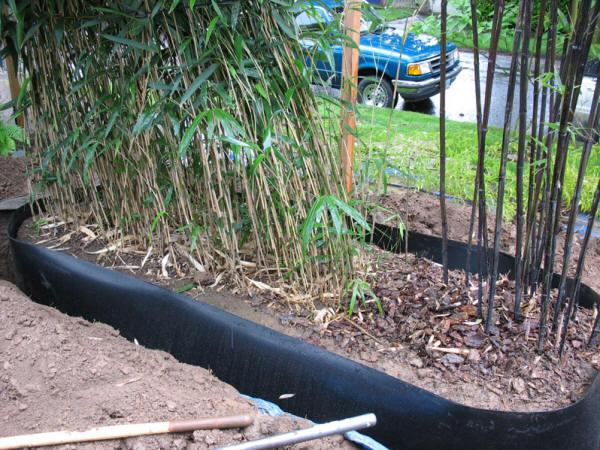
Filling a 55 gallon water drum
Question: I live alone with two dogs just outside of a large US city. I have about 30 gallons of store bought water for my dogs (stored in the basement where it’s dark and cool ) and 30 gallons in 5 gallon containers for me. I also have family living nearby (including a daughter with young baby), so I could see her coming to stay with me in an emergency situation. For that reason, I’m considering a 55 gallon drum in my basement. When it’s time to replace the water with fresh water I should be fine since I have a drain in my basement floor. My question is about filling! I have a hose that would reach to my basement for filling, but it’s not a potable hose. Will treating the water before sealing the barrel take care of that?
Read MoreThe dangers of leaving people and pets in hot cars
The above graph is from San Jose State University and shows the amount of children who die each year from being in a hot car. See the dip in 2020-2021 during the pandemic and when people were not driving as much?
Newborns, children, those with disabilities, the elderly, those with a chronic illness, or pregnant women are especially vulnerable and sensitive to extreme heat. To be safe, don’t leave anyone in a hot car.
Animals can die of heatstroke within 15 minutes in a hot car. Cracking the window does not help. Plan your trips and know where you are going during the day. If you are going somewhere that involves leaving your pet or child in the car at any time, leave them at home with a care giver.
If you ever see a pet or child left unattended in a vehicle, call 911 immediately and do not leave their side until the issue has been resolved. Signal for someone else to note the license plate number and go into nearby stores to try and locate the owner of the vehicle. Talk to dispatch and monitor the trapped victim’s status. If they get worse or even faint, then break in and save them. What are your thoughts on smashing out a window to save a pet in a car?
Some additional facts:
The temperature inside a car can get 50 degrees hotter than on the outside. After 10 minutes, and car will reach 94 degrees inside when the outside temp is 75. Heatstroke can occur when outside temps are as low as 57 degrees. A child’s body heats up 3-5 times faster than an adult, so you may be fine inside the hot car but your child may be in the back seat really struggling. Keep an eye on them even if you are there with them. Lock you vehicle at home not only to prevent theft, but to keep children from playing in them and accidentally being locked in. Only 21 states have laws addressing leaving a child in an unattended vehicle. But even if you are in a state that doesn’t have a specific law, you can still be charged with child endangerment or even manslaughter.What are your thoughts about leaving a kid or pet in a car with the AC on full blast while you run into the post office?
Leaving children or pets in a hot car might not even be intentional and could just be a result of being distracted and on “auto-pilot mode”. Avoid being rushed or on your phone that can leave you more frazzled and absent minded,. Build up the habit of “Look Before You Lock“. Even if you don’t have children, get in the habit for when you may help transport a neighbor’s kid, niece/nephew, or grandchild. An additional benefit of this habit is that while doing the sweep of the vehicle, you can be aware of any objects left in plain view that might be attractive to thieves.
Don’t assume that every family member or care giver you place in trust of your loved ones knows as much as you do about hot vehicles Educate them. Here is a 10 minute free online interactive course about leaving children in hot cars.
Read More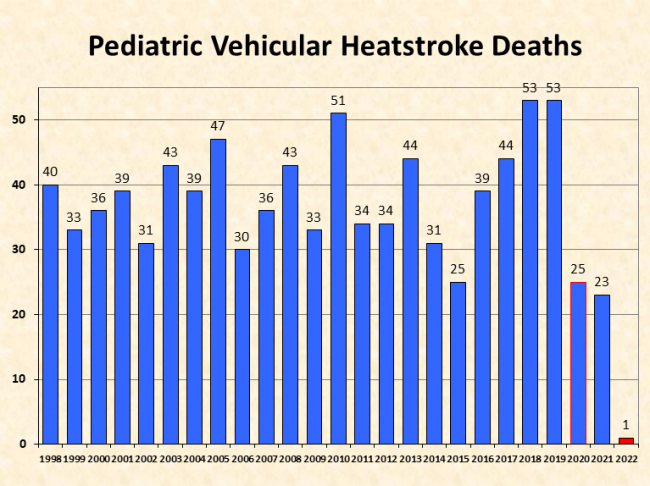
100 things to disappear first
I was going through some prep info today and found this article originally published in 2007 on Fluwiki. It is a very interesting list of items and has been helpful in planning some of my preps, so I thought I would share it with you. Some of you may have already read this, but it is worth looking at from time to time. I keep tinned gravy in my preps because of this list.
(I have added spaces between the lines for ease of reading)
Quote begins:
Tips From Sarajevo: 100 Items to Disappear First
Generators (Good ones cost dearly. Gas storage, risky. Noisy…target of thieves, invites marauders; maintenance etc.)
Water Filters/Purifiers
Portable Toilets
Seasoned Firewood. Wood takes about 6 – 12 months to become dried, for home uses.
Lamp Oil, Wicks, Lamps (First Choice: Buy CLEAR oil. If scarce, stockpile ANY!)
Coleman Fuel. Impossible to stockpile too much.
Guns, Ammunition, Pepper Spray, Knives, Clubs, Bats & Slingshots.
Hand-can openers, & hand egg beaters, whisks.
Honey/Syrups/white, brown sugar
Rice – Beans – Wheat
Vegetable Oil (for cooking) Without it food burns/must be boiled etc.)
Charcoal, Lighter Fluid (Will become scarce suddenly)
Water Containers (Urgent Item to obtain.) Any size. Small: HARD CLEAR PLASTIC ONLY – note – food grade if for drinking.
Propane Cylinders (Urgent: Definite shortages will occur.)
Survival Guide Book.
Mantles: Aladdin, Coleman, etc. (Without this item, longer-term lighting is difficult.)
Baby Supplies: Diapers/formula. ointments/aspirin, etc.
Washboards, Mop Bucket w/wringer (for Laundry)
Cookstoves (Propane, Coleman & Kerosene)
Vitamins
Propane Cylinder Handle-Holder (Urgent: Small canister use is dangerous without this item)
Feminine Hygiene/Haircare/Skin products.
Thermal underwear (Tops & Bottoms)
Bow saws, axes and hatchets, Wedges (also, honing oil)
Aluminum Foil Reg. & Heavy Duty (Great Cooking and Barter Item)
Gasoline Containers (Plastic & Metal)
Garbage Bags (Impossible To Have Too Many)
Toilet Paper, Kleenex, Paper Towels
Milk – Powdered & Condensed (Shake Liquid every 3 to 4 months)
Garden Seeds (Non-Hybrid) (A MUST)
Clothes pins/line/hangers (A MUST)
Coleman’s Pump Repair Kit
Tuna Fish (in oil)
Fire Extinguishers (or..large box of Baking Soda in every room)
First aid kits
Batteries (all sizes…buy furthest-out for Expiration Dates)
Garlic, spices & vinegar, baking supplies
Big Dogs (and plenty of dog food)
Flour, yeast & salt
Matches. (“Strike Anywhere” preferred.) Boxed, wooden matches will go first
Writing paper/pads/pencils, solar calculators
Insulated ice chests (good for keeping items from freezing in Wintertime.)
Workboots, belts, Levis & durable shirts
Flashlights/LIGHTSTICKS & torches, “No. 76 Dietz” Lanterns
Journals, Diaries & Scrapbooks (jot down ideas, feelings, experience; Historic Times)
Garbage cans Plastic (great for storage, water, transporting – if with wheels)
Men’s Hygiene: Shampoo, Toothbrush/paste, Mouthwash/floss, nail clippers, etc
Cast iron cookware (sturdy, efficient)
Fishing supplies/tools
Mosquito coils/repellent, sprays/creams
Duct Tape
Tarps/stakes/twine/nails/rope/spikes
Candles
Laundry Detergent (liquid)
Backpacks, Duffle Bags
Garden tools & supplies
Scissors, fabrics & sewing supplies
Canned Fruits, Veggies, Soups, stews, etc.
Bleach (plain, NOT scented: 4 to 6% sodium hypochlorite)
Canning supplies, (Jars/lids/wax)
Knives & Sharpening tools: files, stones, steel
Bicycles…Tires/tubes/pumps/chains, etc
Sleeping Bags & blankets/pillows/mats
Carbon Monoxide Alarm (battery powered)
Board Games, Cards, Dice
d-con Rat poison, MOUSE PRUFE II, Roach Killer
Mousetraps, Ant traps & cockroach magnets
Paper plates/cups/utensils (stock up, folks)
Baby wipes, oils, waterless & Antibacterial soap (saves a lot of water)
Rain gear, rubberized boots, etc
Shaving supplies (razors & creams, talc, after shave)
Hand pumps & siphons (for water and for fuels)
Soysauce, vinegar, boullions/gravy/soupbase
Reading glasses
Chocolate/Cocoa/Tang/Punch (water enhancers)
“Survival-in-a-Can”
Woolen clothing, scarves/ear-muffs/mittens
Boy Scout Handbook, / also Leaders Catalog
Roll-on Window Insulation Kit (MANCO)
Graham crackers, saltines, pretzels, Trail mix/Jerky
Popcorn, Peanut Butter, Nuts
Socks, Underwear, T-shirts, etc. (extras)
Lumber (all types)
Wagons & carts (for transport to and from)
Cots & Inflatable mattresses
Gloves: Work/warming/gardening, etc.
Lantern Hangers
Screen Patches, glue, nails, screws,, nuts & bolts
Teas
Coffee
Cigarettes
Wine/Liquors (for bribes, medicinal etc)
Paraffin wax
Glue, nails, nuts, bolts, screws, etc.
Chewing gum/candies
Atomizers (for cooling/bathing)
Hats & cotton neckerchiefs
Goats/chickens
From a Sarajevo War Survivor:Stockpiling helps, but you never no how long trouble will last, so locate near renewable food sources.
Living near a well with a manual pump is like being in Eden.
After awhile, even gold can lose its luster. But there is no luxury in war quite like toilet paper. Its surplus value is greater than gold’s.
If you had to go without one utility, lose electricity – it’s the easiest to do without (unless you’re in a very nice climate with no need for heat.)
Canned foods are awesome, especially if their contents are tasty without heating. One of the best things to stockpile is canned gravy – it makes a lot of the dry unappetizing things you find to eat in war somewhat edible. Only needs enough heat to “warm”, not to cook. It’s cheap too, especially if you buy it in bulk.
Bring some books – escapist ones like romance or mysteries become more valuable as the war continues. Sure, it’s great to have a lot of survival guides, but you’ll figure most of that out on your own anyway – trust me, you’ll have a lot of time on your hands.
The feeling that you’re human can fade pretty fast. I can’t tell you how many people I knew who would have traded a much needed meal for just a little bit of toothpaste, rouge, soap or cologne. Not much point in fighting if you have to lose your humanity. These things are morale-builders like nothing else.
Slow burning candles and matches, matches, matches.
More matches
End Quote
Read MoreThe Gottman Island Survival Game
While reading a marriage book, I came across an exercise about communication and being able to influence your spouse. Thought it would be interesting for people here to think about and maybe do with each other here or privately with their own spouse.
The Gottman Island Survival Game
Imagine yourself shipwrecked with your partner/the members of this forum on a tropical desert island. Gilligan and Ginger are nowhere in sight – the two of you/the members of this forum are the only survivors. You have no idea where you are. A storm appears to be on the way. You decide that you need to prepare to survive on this island for some time, and to find some way to ensure you can be spotted by a rescue party. There are a lot of items from the ship on the beach that could help you, but you can only carry ten items.
Step 1: Each of you writes down on a separate piece of paper what you consider to be the ten most important items to keep from the inventory list below. Then rank-order these items based on their importance to you. Give the most crucial item a 1, the next most important item a 2, and so on.
Ship’s Inventory:
Two changes of clothing AM-FM and short-wave radio receiver Ten gallons of water Pots and pans Matches Shovel Backpack Toilet paper Two tents Two sleeping bags Knife Small life raft, with sail Sunblock lotion Cookstove and lantern Long rope Two walkie-talkie sender-receiver units Freeze-dried food for seven days One change of clothing Bottle of whiskey Flares Compass Regional aerial maps Gun with six bullets Fifty packages of condoms First-aid kit with penicillin Oxygen tanksStep 2: Share your list with your partner/people here on the forum. Together come up with a consensus list of ten items. This means talking it over and working as a team to solve the problem. Both of you need to be influential in discussing your viewpoint and in making the final decisions.
Let’s all do this exercise. Pick your 10 items, list them down in the comments, and then discuss/convince/argue on why we should pick the various items. Let’s see if we can get down and agree with at least 7/10 items as a community if we all were together in this situation of being stuck on an island together.
(Ignore Step 3 if doing it here on the forum, but I’m leaving it in case you want to work with your spouse on your communication)
Step 3: Once you have compromised on a third list, it’s time to evaluate how the game went. Think about how effective you were at influencing your partner and how effective they were at influencing you. Did either of you try to dominate? Were you competitive? Ask yourself if you had fun. Did both of you work well as a team and feel included, or did you sulk, withdraw, express irritability/anger?
Read More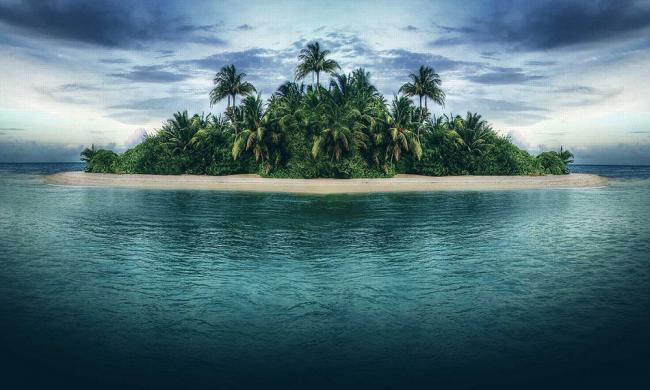
Get Home Bag vs Bug Out Bag – duplicate items?
I’ve been working on rounding out our bug out bags and I’m finding that a lot of items would be duplicates from those in our get home bags. For instance, I have compasses in the get home bags stored in the cars. What is everyone’s opinion on getting additional compasses (or other replicated items) for my bug out bag?
Read MoreHurricane Preparedness Week May 1-7, 2022
Hurricanes are powerful and very destructive forces of nature that affect millions of people each year. Luckily they are not spur of the moment disasters like a car accident or earthquake and some warning and preparation can be made beforehand to either ride out and withstand the devastation or get to a safer location in time.
NOAA (National Oceanic and Atmospheric Administration) will be releasing a daily tip on social media platforms this next week with advice on how to be better prepared for the upcoming hurricane season. The Prepared will be sharing those tips on our Facebook and Twitter pages as well, along with some additional guidance.
For additional preparation, check out: How to prepare for and survive hurricanes
Feel free to also share your hurricane preparedness tips, stories, and experiences down below.
Read More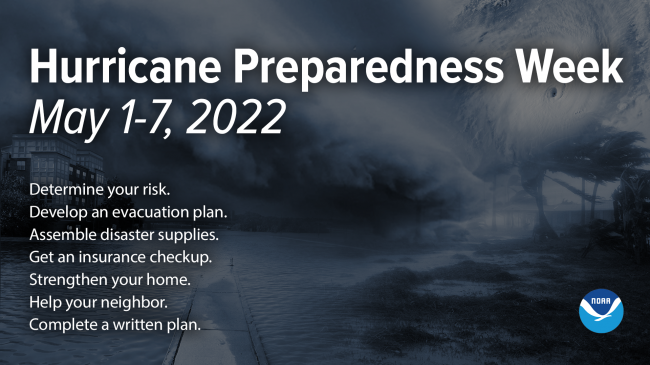
Which lighter is best for use in cold weather?
Many people (including The Prepared) say to carry a butane powered BIC lighter.
While I do agree that they are great because they are cheap ($1-1.50/each), pretty dumbyproof, don’t evaporate fluid, and just work, they do not work the best in cold weather. To test this I placed five lighters in my freezer for 30 minutes and noted the results.
The two lighters on the left in the picture above are regular Zippos that run off of lighter fluid. The three lighters on the right are two standard butane BIC lighters and a Zippo lighter with a butane torch insert.
The two lighter fluid Zippos work off of having a liquid fuel suspended in cotton that evaporates up the wick. When pulling these straight from the freezer they did not light on the first strike but required about 5 seconds to warm up just that little bit to start evaporating the fluid. It lit to a full strength flame and worked every strike there after.
The two BIC lighters had to be warmed up in my hand for about 20 seconds before the smallest of flames would be released. Even a couple minutes after being removed from the freezer they still had very small and weak flames. The Zippo with the butane torch insert was the worst of them all. It was very very cold and required many minutes in my hand to be able to light.
Summary – Butane does not function well in cold temperatures. If a butane lighter is part of your EDC or emergency bag these will need to be placed in a pocket close to your skin and warmed up before use.
The trouble with the lighter fluid fueled lighters are that they do evaporate unless they are sealed with an O ring like a peanut lighter. If you don’t EDC one of these and fuel them up weekly, then storing them dry in your bag and having a small 4oz bottle of fluid ($3 at Walmart) or storing fluid in a fluid canister are options in an emergency bag.
Read More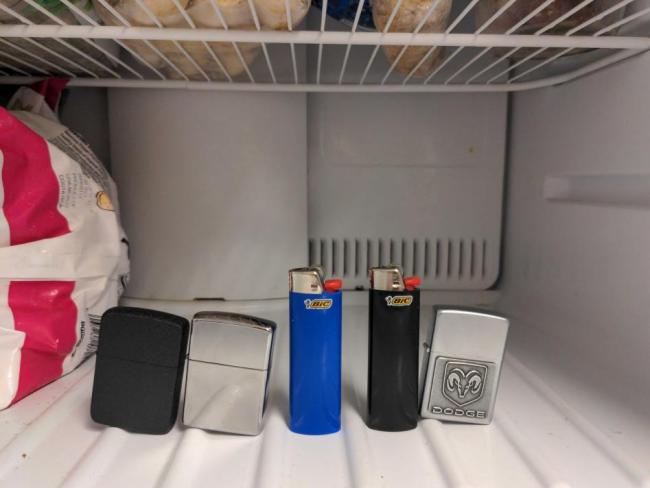
Book Review: “The Drought-Resilient Farm”, by Dale Strickler
(image credit: “drought” by dasroofless is licensed under Creative Commons – CC BY-NC-ND 2.0)
In May 2015 a tornado hit Dale Strickler’s hometown and delivered four and a half inches of rain in 20 minutes.
While all of the neighbouring farms had water pouring off the field in several-foot-wide streams – Strickler’s field absorbed every drop of water.
For him this was the proof that his several-decade quest to improve land management and be better able to prepare for, avoid, and weather drought was paying off.
His techniques worked.
This book is a summary and synthesis of collected wisdom.
History
Strickler grew up on a farm in Kansas. In his youth he often watched his father work frustratingly hard on the family farm, only to have their crop ruined by drought. Strickler became an agronomist to better understand how to prevent, avoid, and combat drought. Decades later – after years of experience, experiments, education, and interviewing many drought survivors – he has been able to prove his techniques work. In one example, during a massive, historical drought in 2012, his fields were retaining moisture and his crops produced normal yields, while across the fence neighbour farm crops were dying.
Recipe
“The Drought-Resilient Farm” is a short, easy read. But the techniques and attitude changes it contains are invaluable.
As Strickler puts it himself, the recipe to avoid drought is deceptively simple:
“Get water in”: Increase infiltration of rainfall into the soil, and decrease runoff. Capture the water you get. “Keep water in”: Increase the amount of water the soil can store. “Get water out”: Help the right plants use the water efficiently, when needed.“Like so many other worthwhile endeavors, however, the devil is in the details”.
Proactive Prevention
Strickler’s book is divided into three parts. The first part details the proactive steps you can take to capture water, retain water, and use it well. This includes a practice of no-till (not breaking up the land). Despite some belief – tilling soil actually decreases its ability to absorb moisture. It also destroys organic matter. Strickler advises not tilling.
Next on the list is employing mulch: “Perhaps no other practice improves water movement into the soil surface more effectively than creating and maintaining a mulch layer”. Mulch absorbs the energy from falling rain, and prevents the impact from destroying the soil surface. This allows water to continue down into the soil when pore spaces are intact.
Finally Strickler is an avid fan of cover crops – using these to retain soil moisture; create a layer of surface mulch; and have a backup source for feed when needed. He goes into detail about many other practices – from diagrams of landforming terraces, retention dams, and vertical mulching; to the benefits of mycorrhizal fungi.
Strickler points to a very visible experiment – the USDA Rainfall Simulator – that makes it easy to see the results of his techniques. In one jar with common corn-growing agriculture techniques almost no water reaches below the soil. In another jar that follows Strickler’s regimen of soil care, nearly all of the water is kept.
On the topic of keeping water inside the soil, Strickler has advice about removing weeds (so they don’t use or transpire the moisture); planting perennials for windbreaks; interseeding plant types; and more uses for cover crops. He has been able to expand his soil’s water supply from storing 16 days of water during the peak summer season to storing 53 days of water. As you can imagine this allows plants to go much longer without rain before getting stressed or needing irrigation.
Finally Strickler discusses growing good, deep roots and breaking up the soil. He discusses *not* tearing up the land with subsoilers or machines; for the main limit on root growth depth is actually oxygen penetration. He has a good discussion on growing crops like radishes with large taproots to help break up the soil and get oxygen down inside.
Using What You Have
Part 2 of the book discusses management strategies for livestock, water supply, and feed. Strickler has many useful techniques to make the most of your land, plant, and feed resources in the correct order to avoid overgrazing and lengthen your drought-tolerance window. Again this includes interseeding various crops. Strickler’s strategies are a solid demonstration of the possible beneficial partnerships between plants, animals, and human stewards where resources can be reused and recycled, and the whole is better than the sum of the parts.
Finally Strickler concludes his book with a practical checklist of actions to take before, during, and after a drought to minimize impact. He provides a high-level plan for future agriculture in drought-prone areas. Each of the chapters ends with a clear and useful chapter summary that makes it easy to recall and use the important tips.
A Positive View For The Future
Strickler’s book is uplifting and encouraging: he views drought not as an unavoidable, entirely natural disaster; but as something mostly man-made. He lists the main causes of drought as destruction of vegetation and bad agricultural practice. This is encouraging – it suggests that we do indeed have the ability to improve our situation and reduce or avoid disaster ourselves, by planning smartly, and then working hard. It points to an opportunity for us to be good stewards of the earth. Indeed: it is telling that 95% of the book’s content deals with pre-planning and preparations to take *beforehand*, to mitigate drought and avoid it entirely. The remaining 5% of content is actions to take during the actual drought.
As someone who grew up on a farm – I highly recommend this book to anyone who has land, livestock, or access to a garden. All of the advice makes sense and is doable. Perhaps you can apply it in a community garden near you. I hope that by sharing the spirit and proven techniques of this book I can do a small part to raise awareness and help the whole planet improve resilience.
(edit: fix typo; add extra section header for easier reading)
—
Publisher page – “The Drought-Resilient Farm” Author essay on mulch Read More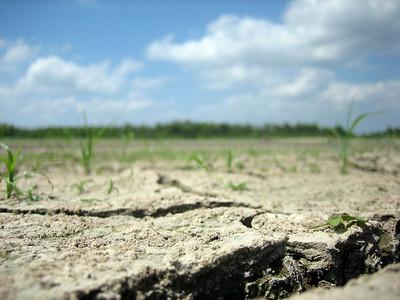
Helpful bugs in your garden – Don’t kill these!
At least for me, when I see a bug inside my house I kill it or relocate it outside. But some bugs might be helpful in garden at eating other bugs that would otherwise take out your crop.
Here are some bugs that I learned about that can help in the garden, reduce the need for pesticides, and don’t look too creepy:
Ladybugs – Cute, usually left alone by other bugs so they won’t be eaten themselves, and they eat aphids, mealy worms, leafhoppers, and mites.
Tachinid fly – They lay their larvae in the backs of other bugs like caterpillars and moths. When the larvae hatch, they consume the host they have been planted in. SICK! But helpful…
Green Lacewings – They eat aphids, whiteflies, leafhoppers, and mealybugs
Fungus gnat predator – The only creepy looking one I’m adding on the list because of how helpful they are at eating fungus gnats, gnat larvae, and spider mites. I’ve had issues with fungus gnats before and they will destroy your plant, wish I had a few of these predators earlier.
Praying mantis – They eat moths, beetles, crickets, and caterpillars.
Spiders – I usually kill spiders because I don’t know the ones that could turn around and kill me. Self defense? But spiders are helpful in the garden at killing many various bugs so it’s best to leave them be.
Bees – You may be afraid of getting stung, but we need to save the bees. They bring fruit to your garden by pollinating the flowers.
Worms – If you find a worm, take it to your garden and they will aerate your soil and break down compost into rich fertilizer.
Toads – Not a bug, but a slug and bug killing machine. You may like one of these going around your garden than some of the creepy bugs.
Baby chicks – Baby and young chicks will clean up a garden of invading pests, but once they grow up they start to realize that they can eat the berries and other leaves of your plants.
You can buy many of these insects online, at your local nursery, or maybe a hardware store. For example, here are 1000 green lacewing larvae for $24
Read More
Do you really need small portable solar power?
Not trying to be controversial, just trying to think through the benefit of portable solar. Recently bought a 28W panel, which was damaged so I’m returning it but got me thinking that I’m not quite sure it’s place. To be fair, I have a 2200W inverter as well, and some way of generating more power is good. But I also have a couple battery packs, and tool batteries with a USB converter.
My current thinking is I have enough stored power for a short term disruption. I have fuel for on inverter to run it for maybe 40ish hours. And from past events it only needs run sporadically. We live in a hurricane zone so wouldn’t be my first round.
Anyway… I’m finally getting to my point (I think) small apartment, no storage, urban environment that you’d want to evacuate in SHTF scenario it makes more sense to get portable power generation. I’m more likely to bug in it seems, and if we get past my short term needs then being able to charge a mobile phone probably isnt gonna help. If we need to evacuate, the. It’s cause of a hurricane etc which is more localized and you can move to areas where power isn’t the issue.
So am I wrong? What am I missing or failing to consider? I know The Prepared advocates not fixating on a particular situation but also doesn’t advocate waste so I’m curious what people think.
On top of that I’m curious peoples thoughts on what common items for BOB/GHB etc maybe they don’t see as much use for. Just curious how people approach stuff.
Read MoreHow to prep for “slow collapse”
In a sort of shout out to the blog post on ‘best preppier movies‘ the topic of “slow collapse” has been on my mind lately (while nervously looking around, wondering if it’s already too late?). Pardon if this has been covered already and I missed it.
The movie “Children of Men” is a great visual for this but it’s also a bit harder to wrap your head around – the sort of “frog won’t jump out water if its brought to a boil slowly” metaphor comes to mind. Bug out bags and off road cars are great in an emergency, but what are good strategies for like 10-20 year slow build up events? What sticks out to me in the movie is that the protagonist in that movie was still living their life, going to coffee shops in the morning, going to work, etc and would have been just fine for probably another decade if they’d kept their head down but their world was obviously, unequivocally falling apart (but then there is also that great subtle scene where the father figure kept his long driveway camouflaged to stay off the radar of people passing by, like thats some great world building and what I’m sort of driving at here).
By its very nature I think its hard to really predict this because you’ll have time to adapt and re-adjust your expectations as you go. You’ll get used to things and not see it as a building threat. I admit there is also the risk of a sort of “phase change” when the slow collapse passes a point of no return. Where the years of neglect eventually results in a quick catastrophic failure mode, but with such a failure mode “the pot boils over” and the usual “emergency plans” do become more relevant.
To be honest, I don’t think we’re *really* there yet, but I do feel like the last year and a half has been a great object lesson in what to expect: decreased availability, increased prices, lowered standards of living, deferment of “routine” health case and maintenance, a shrinking of tribes/social circles, and general increase in scarcity.
So, if you’ll humor a not totally pessimistic scenario – imagine if 2020-2021 is more like the warning shot and not the begging of the end, what would you do if you had 20-30 years of slow/gradual decline – before any sudden phase-change event?
Spend all your money before it’s purchasing power diminished? Invest more aggressively to adapt to cost of living increases and an uncertain future? learn to just do more with less and become more self reliant in general? Would you start stock piling items that you wouldn’t expect to fail for a decade, but might be much more scare/expensive but still technically available in decade? This one is really hard – is it better to save/invest money and pay a premium but have flexibility, or lock in now at a better deal but “guess” wrong on what you’ll need in the future? Look at an actuarial table, be glad if you don’t have kids, and live normally as long as you can? (I don’t mean that as a preferred strategy, just aware some might)I understand that most of the common advice still applies, and that self sufficiency is the name of the game for almost every scenario. I guess what I’m really asking is, in such a scenario is there a contrarian angle that might thrive, that might fly in the face of conventional wisdom, or even ‘conventional preppier’ wisdom?
Read MoreInquiry: Spring sales on handheld ham radios
Good morning! I’m currently in process of studying for the Ham technician license and, in anticipation of actually passing the test, am shopping around for deals on new handhelds, most likely The Prepared’s “best for most” Yaesu pick or something similar. With that in mind, I was wondering if there are typically spring sales or Memorial Day sales that I should be keeping an eye out for or, if not, what the next best opportunity for a discount might be in the annual sales cycle. Thanks for your help!
Read MoreWhat are your 2022 prepping goals and plans?
Even though time is a construct (ahem, indulge me) and new years resolutions are often moot, I find it useful to use the new year to take a step back, reflect, and see where I am with my needs and goals. Especially in prepping, where you are never finished preparing, it is easy to get overwhelmed and lost in the millions of things you need to do (at least that’s true for me). So these are the things I want to focus on this year:
CAR: Last year I moved my BOB permanently in my car and added a full level 3 IFAK kit that is separate from the BOB and easy to access (it’s redundant, but this way if I have to leave my car quickly I don’t have to worry about the IFAK as there’s already one in the BOB ). This year I’d be happy if I only added: traction pads, flares, and a triangle (yup, I’m still without a triangle). I’m also thinking of adding a wool blanket in case I get stuck in a wildfire and need to protect myself. The thought is terrifying but I live in CO and wildfires are a grim reality I have to deal with. The BOB already contains a half-face respirator and goggles, and because of Covid I also have a few N95 respirators laying around in my center console, which would help with smoke inhalation.
GARDENING: Last year I set up a very small raised garden bed and managed to grow only a few things (I started late in the season and didn’t know what I was doing). I still have a variety of seeds from last year and, even if I still don’t know what I’m doing, I want to be organized and start planting anything I can from the leftover seeds as soon as possible and on time. My goal is not to rely solely on this garden for fresh vegetables, but rather just to get in the habit of planning a garden, and learning new things. It’s also going to be a good test to see if those seeds still germinate.
MISC: I’m training to hike my first 14er this year and, apart from it being a good fitness challenge on its own, I want to take the occasion to learn how to find water in the wild by using a map and reading the environment. I’m not planning to rely solely on wild water during the hikes and will be always carrying the min. 2-3 liters of water that’s usually recommended, but it’s going to be a great opportunity to use those map skills often and become more confident in them. It’s also going to be a good way to start training to carry a BOB for a long time. Although the pack I’d be carrying on the hikes is not going to be as heavy as my BOB, it’s still going to be filled with basic survival supplies, water, etc and it might reach 15-20 lb. Once I get the confidence that I can carry a pack for hours in any type of environment and terrain, I can see challenging myself to carry a full-on BOB regularly on walks or hikes.
There are still bazillion things I want and need to do, but I’d be totally happy if I just got these things done. What are your plans for this year?
P.S. Check out this excellent forum post about prepping challenges and experiments.
Read MoreWater purification priorities
There’s a few methods to purify water but I was wondering how they should be prioritized if you have all of them. Say you’ve been a good prepper and have the following…
– Water filtration (HydroBlu inline + backup LifeStraw)
– Water purification tablets (chlorine)
– A clear bottle for solar disinfection (SODIS)
– A hard canteen you can boil in, plus lighter/matches
– Bandana
The day is young, the sun is out, and you’re staring at a puddle. After you’ve scooped up as much as you can, what item or combo of items do you reach for first? And second, third, etc. Of course, you have no idea how long this emergency will last.
I’m writing a short guide for myself / my partner on how to prioritize gear use for safety and longevity. For instance, boiling requires fuel, so it wouldn’t be my first pick.
Read MoreMakeover of a pre-assembled BOB in 1 week and $125
Last weekend I pulled my husband’s BOB out from its storage spot and did an inventory. He bought it pre-assembled when we first started dating (and I said, “You have an earthquake kit, right?”) and I remember going through it at one point, but I had forgotten how long ago that was and how crummy the kit was to begin with. (I don’t know what I thought about who was maintaining it during this period of time.)
At first, I thought it would take a lot of time and money to rectify the situation, but then I found a ton of extras and replacements in the house, spent $125 on new stuff, and one week later, the bag is SO much better. It’s not “done”, but I’m really pleasantly surprised at what a difference I was able to make. I thought I’d share it with you all to celebrate this small prepping win, and also because it might prompt some interesting discussion about where these pre-assembled kits fall down.
On that point, I feel like the biggest gaps between what we got in the pre-assembled kit and my husband’s actual needs were in the following areas:
IFAK. I give the kit maker credit for including a triangle bandage and safety pins in the FAK, but the rest of it was basically bandaids, and I don’t see the point of including trauma shears if you include none of the other materials one would need in the scenarios in which one needs shears. The “improved” kit still needs a lot of work, but my husband doesn’t have a lot of first aid knowledge, so I think training should be the priority for him here. In the meantime, I was able to improve the kit a lot by adding a lot of basic OTC medicines in small Ziplock bags that I already had on-hand, as well as useful things like oral rehydration solution. Toiletries. His had a lot of cheap stuff that he didn’t actually need and wouldn’t make him comfortable. Power/charging. It makes sense that the pre-assembled kits don’t include charging cords, since that has to be customized to one’s own electronics, but this was a major hole in the kit, and a power bank, wall plug, and charging cable set me back $40.The “survive outdoors” stuff in the kit was also pretty bad, but given our particular circumstances, that doesn’t bother me too much: I’m against buying BOB duplicates of our better-quality backpacking and camping gear that we use regularly, so I’m fine with a cheap tube tent and mylar sleeping bag as lightweight, low-volume insurance in case we don’t have time to grab the better stuff on our way out the door.
The thing that bugs me most about his BOB right now is the quantity of cotton clothing, but we have some pretty good used outdoor gear stores here that I plan to hit for synthetic replacements and a fleece.
Here is a list of the CURRENT contents of his BOB, broken down by categories. Everything with an asterisk (*) is a new addition, (†) indicates new purchases. Aside from power, most of the $$$ were spent on a better food and water setup.
FOOD & WATER
Lifestraw* 27 oz. Klean Kanteen, single-walled, filled* 30-pack Katadyn Micropur Purification Tablets*† 2 Coast Guard-style ration blocks*† (1 replaced from home supplies, 1 ordered) 5 tea bags of his favorite tea* (Note: I have a stove to heat the water.) 1 collapsible mug*†SHELTER, WARMTH, & LIGHT
plastic tube tent 1 mylar sleeping bag 2 single-use hand warmers (almost certain they are expired, but they’re light) 1 rechargeable headlamp 2 lighters* (had 1, added 1) an unknown, but volumetrically large quantity of very cheap cordage 1 “5-in-1” survival tool consisting of a whistle, a tiny compass, a tiny signal mirror, a very tiny and questionable “flint”, and a compartment for matches (came without matches) 12 stormproof matches* packet of dryer lint “tinder”*CLOTHING
1 cotton t-shirt 1 pair jeans 1 pair long underwear bottoms* 1 warm hat 2 pair of socks* (had 1, added 1) 2 pair of boxers* (had 1, added 1) 1 old down jacket 1 old rain jacket 1 plastic poncho 1 bandana*TOILETRIES
1 travel toothbrush 1 travel toothpaste 2 oz. Dr. Bronner’s*† 2 oz. hand sanitizer* 1 compact roll of toilet paper (i.e., no cardboard tube)*† 1 Paper Shower* 3 pair ear plugs* 1 eye cover*† 1 chapstick* 1 pair nail clippers*INFORMATION & COMMUNICATION
1 walkie talkie and charging cord 1 very crappy hand-crank radio evacuation list* (things to grab in addition to the bag if we have a few minutes) photos of us together and with our dog* names, addresses, and phone numbers for various friends and relatives emergency information specific to our city the “critical information sheet” I made with all of our insurance policy numbers, claims department phone numbers, the dog’s vaccine info and microchip numbers, regular and emergency vet contact info, our most recent vaccines and doctor and dentist numbers, etc. detailed street maps for 3 West Coast cities small Rite in the Rain notebook*† pen, mechanical pencil, sharpieTOOLS
1 off-brand Swiss Army Knife-style multitools (the big kind with a scissors) 1 credit card-size Fresnel lens*IFAK
8 cleansing wipes 5 Q-tips, sterile 4 gauze pads (2 sizes) 1 pair trauma sheers 6 pair nitrile gloves* (kit came with 1 pair, which I put in an exterior pocket for ease of access; other 5 are in the kit) 1 CPR mask 1 triangle bandage 4 safety pins 1 pair tweezers 1 teeny tiny roll of medical tape 65 bandaids in varying sizes Coban roll* 3 packets oral rehydration solution* 20 Benadryl* 11 Acetaminophen* 6 Naproxen sodium* 20 Ibuprofen* 6 Loperamide* 5 mini-Ziplock bags for storing medications (dosage info written on these)*POWER
1 Novoo Explorer power bank*† 1 USB wall plug*† 1 USB A to USB C charging cable*†MISC.
1 KN95 mask* 1 cloth mask* 1 reusable half-face respirator* 1 packet of respirator filters* swim goggles* 1 deck of cards heavy gloves cash extra Ziplock and trash bags, varying sizes*And here is what I removed from the pre-assembled kit:
12 packets of emergency drinking water, expired 2 Coast Guard-style ration blocks, expired 1 very flimsy “can opener” that looks far more likely to open one’s hand than one’s can 1 mylar sleeping bag 2 glow sticks 2 plastic ponchos 1 vinyl bag for toiletries, so stiff and sharp-edged that I nearly cut myself trying to open it 1 travel toothbrush 1 tiny hotel soap wrapped in paper 1 wash cloth 4 single-use shampoo packets (my husband shaves his head; it would take a long time for him to really need any shampoo, let alone three packets’ worth) 2 menstrual pads (my husband does not menstruate) 1 large plastic comb (as long as he has trauma shears, he won’t have hair long enough to need this 😀 ) 1 disposable plastic razor 1 travel-size shaving gel 1 roll of toilet paper (like a giant normal one from the bathroom, with the cardboard inside) 1 off-brand Swiss Army Knife-style multitool (there were two) 4 cleansing wipes 5 cotton balls, packaged to be sterile approximately 2 million-minus-65 bandaids Read MoreReview: Xtar 100W semi-portable solar panels and 678W battery pack
The Prepared was sent over a sample power station and solar panel by the company Xtar Direct. After a few weeks of testing I have to say that it is a pretty good off-grid power solution for medium draw devices.
The solar panel
The 100W solar panel surprised me with its build quality and efficiency. In direct sunlight it produced a steady 110 watts and even when it was overcast and cloudy it could still ink out 20-25 watts. The panel is slightly flexible, is able to fold in half during transport, and is held together using strong magnets. It features a pouch on the back that houses the generous 10 foot cable with extra room to spare. The cable has a DC7909 (8mm) port, so you will need an adapter if your power station doesn’t use this type of connector. Two adjustable kickstands are attached to maximize the output from the sun.
One of the downsides of having a lightweight panel is that it is easily blown in the wind. After two days of use, I noted that the wind was scooting it forward against the asphalt and was starting to wear down the points of contact. To protect it from wearing down further, I placed some binder clips where it comes in contact with the ground. I would have liked to have the edges dipped in rubber to be more durable and prevent sliding.
To prevent the panel from blowing away, tipping over, or sliding and wearing against the ground, I took various measures to keep it stable. I laid out an old pair of jeans along the front edge of the panel to protect it from the asphalt. A smaller piece of denim was placed on the back kickstands as those are just made of fabric as well. I made two sand bags and tied the top edges to it with some scrap paracord. The sandbags prevent the panel from blowing forwards, and the power station nestled under the panel keeps it from blowing backwards. Another benefit to placing the power station under the panel when charging is that it keeps it cooler in the shade of the panel to prevent the batteries from overheating, and shelters it from any rain that might come down.
Overall, I am very happy with this panel. I love how lightweight it is, easy to transport, the magnets holding it closed are nice, and it pumps out more electricity than advertised. My one recommendation to Xtar is to dip the edges in rubber to prevent slipping and wear.
The power station
This is a well built power station that will hold up to moderate use. I liked the very thick and grippy rubber bumpers on the bottom, easy to grab handle, and 11 pound lightweight build. It packs in 568Wh of lithium ion batteries that will retain 80% of their original charge after 800 discharge cycles. There is a 500W pure sine wave inverter which can handle a 1000W surge load. Packed with two full sized AC wall outlets, three USB-A ports, a DC cigarette lighter port, and two additional DC outlet ports you don’t need much more than this.
The user manual was poorly translated and led to some confusion. And maybe it is just me, but I could not figure out what the giant ‘678W’ stood for on the front of the unit. It didn’t mention this number in the manual or on their website, so I had to contact their customer service team to find out and they said that the 678W is the output of all the ports combined. 678w= AC(500W)+ DC(140W)+ USB(10W+10W+18W).
When testing the USB ports, I was only ever able to pull 6W out of any of them. When all three USB ports were loaded I was drawing 26W. I don’t have a USB multimeter, and was just going off the display of the unit of what it says it was drawing.
The display tells all the info you need such as how many watts are coming into the unit when charging, how many are going out during use, the remaining percentage of battery capacity, and which outlets are being powered. The display is great indoors, but difficult to read outside in the bright sun.
For many days I put this unit through some real world tests and it handled things excellently! I ran a giant old TV and video game console, Dremel rotary tool, lamp, computer, and monitor. Not all at once, but one or two together at the same time and it all worked well.
When running my desk setup off of it (laptop, monitor, speakers, mouse, keyboard, USB hub) I was able to start with 98% at 10am and run till 6:40pm and still have 37% left over. This desk setup only drew between 40-50W, so not too draining. I did run into a weird quirk however when powering my work desk devices. If I was powering everything at the same time, just the monitor, or even just the laptop I would experience constant turning off and on randomly with my keyboard and mouse in the USB hub. So weird that the power station would influence that even if it was just my monitor being powered by it and the monitor is only connected to my laptop through an HDMI cable.
The included 100W wall charging brick comes in a nice pouch and works flawlessly, but I did run into an issue when charging the power station with the solar panel. I would set everything up and leave it out to charge in the sun only to find out later that it wasn’t charging. Xtar had a very responsive and personalized customer support team, so A+ for that, and they informed me that there was a charge procedure issue with the power station and that I would not run into this issue if I depleted the unit below 40% and started charging from there. So I drained the unit to 5%, plugged it in and it charged the entire day without issue. But whenever I start the solar panel charging at say 55%, it will only charge like 6% and then stop. If I unplugged the charging cable, waited 30 seconds, and then plugged it back in, it would start charging at the full 110W again for a couple more minutes.
Unfortunately, this power station seems to be a Chinese white label product from what I’ve seen. That means that a company in China makes a ton of these with no branding, sells them to various companies who just put their sticker on them and say that it is their product. This model can be bought in bulk on Alibaba.com for $252, then one sticker later they turn around and sell it for $370.
How does it compare to other power stations?
At $370 for the power station, $270 for the solar panel, or $600 for the combination when bought using that link for the power station, this is a very economical way to get into powering medium sized devices.
Quick comparison to more “name brand” power stations:
Xtar power station – $370 – 568Wh battery capacity – 2 AC ports
Jackery explorer 500 – $500 – 518Wh battery capacity – 1 AC port
Goal Zero Yeti 500X – $700 – 505Wh battery capacity – 2 AC ports
Summary
With the issue of the unit charging for only a few minutes while powered by a solar panel, it is a major irritation to constantly be sitting by it and unplugging and plugging it back in. But if you are just going to buy the power station and use the AC charger, then I highly recommend the Xtar power station as a cheap source of emergency power or as a unit you could bring camping.
Read More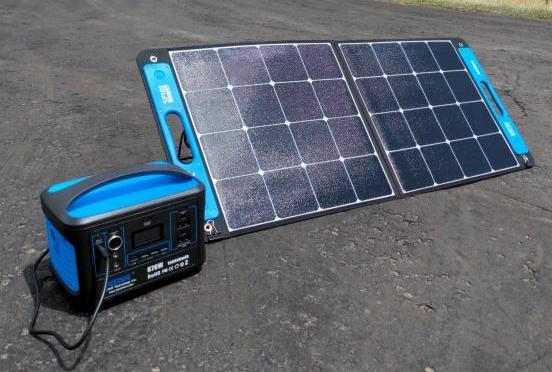
Faucet for 55 gallon water drum
I’m thinking about laying my barrels on the side and installing a faucet in the bung hole. I’m looking at this on Amazon:
I know that the threaded bungholes in the top of the drum are National Pipe Thread. The big one is 2″ NPT. The small one is 3/4″ NPT. This faucet could go in the 2″, but will I need to vent also (went I want to use the water?) I’ve been looking online and I’m stuck – help?
Read MoreStraw bale gardening – Turn last fall’s decorations into this spring’s raised garden bed
Has anyone tried straw bale gardening? I have to say it is a creative and resourceful way to have raised garden beds.
The idea is that you take a straw bale, sprinkle a bit of potting soil on the top to start out the seeds, and the plants will then grow into and live off of the decomposing straw bales. This technique is nice because it doesn’t grow weeds, easy to care for, is raised up, and can even be placed down on concrete.
Some tips I read about:
Hay contains seeds, you need to use straw which is just the leftover stalks. You can wrap the straw bales in black plastic and have the sun cook and kill any remaining seeds that were left behind in the straw. Shorter plants work better than tall plants like corn which may tip over Read More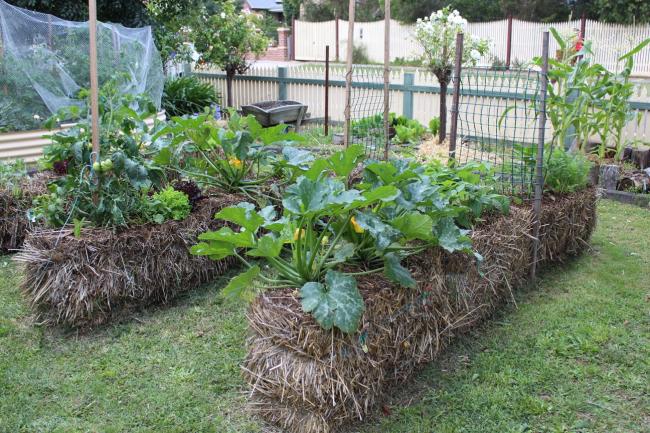
Let’s say there is recession Q3/Q4 ’22?
We have seen two inverted bond yield-indexes since the pandemic began; the first one was alleviated /avoided statistically (and perhaps part of why we have inflation). When the the GR hit around ’08, I was penniless and single. Now, as a middle of the road ‘Merican with a mortgage and some kiddos, I am very intrigued as to what I can do to prepare if a recession does come, beyond common sense/general family financial planning (hat tip ethics/advice from The Prepared)…
To a sharper point-what businesses and incomes did well during the Great Recession? Handymen and self-repair auto parts/service seems to survive when there isn’t enough money for something ‘new’ but rather needing a fix. Is lumber and building materials something viable/smart to stockpile?
Thank you all in advance for your experience and/or feedback shared!
Read More